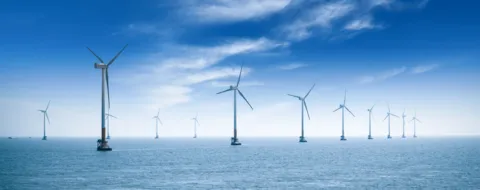A perfect storm for offshore wind?
We are living in troubling times. It is not many months ago that world leaders agreed at COP26 in Glasgow that we need to speed up the transition towards net-zero. Yet, the transition towards renewables will take time, and will require regulators to put in place urgent follow-up measures to turn promises into reality. This is troubling because there are relatively long lead times for establishing any new generation capacity – be it renewables and other generation technologies such as nuclear energy. If we are talking about bigger generation capacity options, we could easily be looking at lead times of 10+ years, and therefore decisions today are needed to make impacts in 2030.
Since COP26 we have also seen escalating energy prices – causing inflation to rise in most economies in the world. The latest developments around the crisis in Ukraine is only causing further pressure on oil and gas prices and serves as a sincere warning about the security of supply in Europe.
Seen from a European perspective we are today confronted by two other major risks: firstly, a potential severe security of supply crisis – worsened by the acute Ukraine-Russia situation, and secondly a daunting climate challenge in the decades ahead.
Europe and its nations must urgently decide on speedy measures to accelerate solutions for the situation we are now facing. A combination of short-term, mid-term and long-term measures should be considered. All European countries should speed up the planning of their energy transition towards net-zero. Such planning should take decisions on building transmission infrastructure to enable huge capacities of renewables in their grids. Lead time for this infrastructure investment are easily 6-8 years.
It is clear today that we will not be able to install the needed 300 GW offshore wind capacity before 2030 with the same approach we take today, which is a project-by-project approach. We urgently need to scale projects and enable clusters of projects to facilitate industrialization, scale economics and volumes to bring down costs. Large projects and the configuration of Energy Islands could potentially be vehicles for increasing speed of project development and installed capacity.
Northern Europe has huge offshore wind resources both in the North Sea and the Baltic Sea – which should be accelerated for development and exploration. In the rest of Western Europe and in the Mediterranean, floating wind can also play an important role in diversifying the energy mix. Hydrogen and Power-to-X solutions will be needed as part of such a massive build-out, and the combination of hugely expanded offshore wind generation and hydrogen will also create increasingly cost-effective net-zero green fuels for the maritime and air transport sectors. In the short to mid-term – regulators and authorities must also help provide leaner and less time-consuming permitting processes for offshore wind build out, as current procedures are slowing down development time significantly. DNV’s recent survey of 1,000 energy industry leaders found that permitting was a significant barrier to progress across the energy industry.
If governments and regulators can secure supportive framework conditions for the establishment of a modern, green and sustainable energy system – then Europe will be able to overcome both its security of supply crisis and the high energy prices, as well as providing an example for the rest of the world of how to create a climate-friendly energy architecture for the future.
What additional evidence and proof do governments and regulators need to do the right thing in the face of a serious security of supply and an emerging climate crisis? The solution is clear: Enable the scale-up of renewable energy including the build-out of significant offshore wind generation capacity, including energy islands and green hydrogen. For me of course, the future is offshore wind - and I stand prepared to be challenged on this point!
Opinion piece by Peter C. Brun, Global Offshore wind Segment Lead, DNV
2/25/2022 9:19:52 AM
